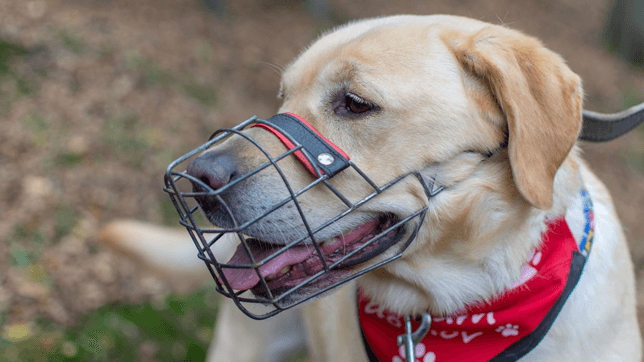Beginners guide to dog muzzles
When people see a dog wearing a muzzle, some immediately think it’s an aggressive or dangerous dog, but this is often not the case. There are a variety of different reasons why an owner gets their dog wearing a muzzle and can be a tough decision to make because of the stigma around them.

We want to dispel some myths around muzzles and provide some top tips on how to use and choose this misunderstood restraint.
What kind of dog wears a muzzle?
A muzzle is a very versatile training tool and models come in different shapes and sizes to accommodate all dogs that need to wear one. Here are just some kinds of situations a dog might need to wear a muzzle:
- To stop scavenging dogs from picking up and eating things from the floor to avoid any health risks while still giving them freedom on walks
- To stop a dog with a high prey drive or strong hunting instinct from catching and hurting any wildlife or other animals
- Training a dog to wear a muzzle in case of an emergency situation to eliminate any unnecessary stress caused by this unfamiliar restraint
- To provide the owner of a nervous or reactive dog with some peace-of-mind
- To comply with legislation where certain dogs (eg. banned breeds, or dogs subject to court orders) must wear a muzzle and be kept on a lead in a public place
- In an emergency situation, an improvised bandage may be used
- When learning the behaviours and temperament of a rehomed dog where their background is not fully known
- To prevent a dog from biting or attacking other pets or people if they have a history of aggression. This helps keep the dog safe, too.
When should a muzzle not be used?
While a muzzle can help prevent dog bites, there are plenty of other situations where a muzzle should not be used. These include:
- To try and stop your dog from barking or chewing
- For long periods of time
- To be used as a punishment method.
It is important not to use a muzzle as an alternative to avoiding stressful situations. So, if you know your dog is likely to become anxious in a crowded place and it can be easily avoided, don’t put them in a muzzle and go anyway.
Think about your dog’s needs and if it’s an unnecessarily stressful situation then why not just remove your dog completely and find something or somewhere that they’re more comfortable with.
How do I pick the right muzzle?
With so many muzzles on the market, you want to make sure you buy one that’s right for your dog so that they can be as comfortable as possible when they wear it.
Here are some tips on choosing a muzzle:
- Make sure it does not restrict a dog’s breathing or ability to pant
- Make sure a dog can still drink water when they are wearing the muzzle
- Make sure the muzzle is the right size and fit for your dog
- Consider where and for how long your muzzle will be used
- That the muzzle is lightweight so as not to restrict your dog’s movements
- A durable muzzle will help you save money in the long run.
How do I get my dog used to their muzzle?
In an ideal scenario, the first time your dog wears a muzzle should not be the first time they need to wear a muzzle as this could make them very anxious in an already stressful situation, so be sure to get your dog used to their muzzle from the beginning.
Here are some tips on how to get your dog comfortable with wearing a muzzle:
- Firstly – always be patient with your dog and don’t give up!
- Provide a treat to your dog at each stage to start a positive association with the muzzle
- Start slow and let your dog sniff and be around the muzzle
- Try teaching your dog to put their nose in the muzzle on their own
- Play with the muzzle’s straps but stop if it startles your dog
- Tighten the straps and then loosen them to get your dog used to putting it on and taking it off
- Once you can get it on and secure and your dog is comfortable, give them a treat
- Get your dog used to wearing a muzzle around the house before you head outside.
And that’s it. Muzzles can be used for a variety of different scenarios with dogs of all breeds and sizes.
Looking for more dog advice?
Find the information you need as we support you through every step of your journey with your canine companion.
Need dog insurance?
Dog insurance can help cover the cost of veterinary treatment if your dog gets injured or falls ill.
